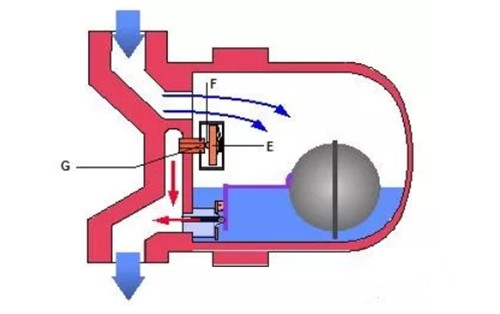What’s steam trap?
Steam traps are a type of valve that automatically discharges condensate, air, and carbon dioxide gas from heating equipment or steam lines while minimizing steam leakage. Traps allow uniform heating of equipment or piping to prevent water hammer effect in steam pipelines. According to its mechanisms or operation principles, steam traps can be divided into floating ball steam traps, thermostatic steam traps, thermodynamic steam traps and so on. Different types of traps can be used to discharge the same amount of condensate under a certain pressure difference, each trap has its own advantages and the most suitable operating usage range depends on its temperature, specific gravities, and pressure.

Factors when choosing a steam trap
- Drain water
The trap displacements are the steam consumption per hour multiplied by the maximum condensing water (2 to 3 times the selected multiplier). When the steam heating equipment starts conveying steam, the steam trap is required to quickly discharge air and low temperature condensed water to make the equipment gradually normal working. Air, low-temperature condensate and lower inlet pressure make trap overload operation when the boiler started, the requirements of the trap than the normal operation of the displacement of large, so generally choose the drain water in accordance with the 2-3 times of the steam trap. This ensures that the trap timely discharge of condensed water and improve thermal efficiency.
- Operating pressure differential
Steam trap nominal pressure and working pressure differ variously because the nominal pressure refers to the pressure level of the steam trap body, so the engineer can not choose the steam trap based on the nominal pressure, but the working pressure differential. Working pressure difference equals working pressure in front of trap minus backpressure of trap outlet. The outlet back pressure is zero when condensate is discharged into the atmosphere behind the trap. If the condensate discharged by the trap is collected at this time, the outlet back pressure of the trap is equal to the resistance of the return pipe + the lifting height of the return pipe + the pressure in the second evaporator (return tank).
- Working temperature
The engineer should select the steam trap that meets the requirements according to the maximum steam temperature. The maximum steam temperature exceeding the saturated steam temperature corresponding to the nominal pressure is called superheated steam. At this point, the special bimetal steam trap for high temperature and pressure superheated steam may be a better choice.
The superheater trap offers two obvious advantages: one is it can be used as a superheater header trap; the other is protecting the superheater tube to prevent overheat burning when starting and stopping of the furnace. Once started or stopped, the main valve is in a state of closure. If there is no steam flow cooling in the superheater tube, the tube wall temperature will increase, which may cause the superheater tube to burn out in serious cases. At this time, open the flow valve to discharge steam to protect the superheater.
- Connections
The connection diameter of the trap is equivalent to the size of the drain water. The steam trap capacity with the same diameter may vary greatly. Therefore, the size of the maximum displacement and the condensate pipe diameter cannot be used to select the trap valve.



Leave a Reply
Want to join the discussion?Feel free to contribute!